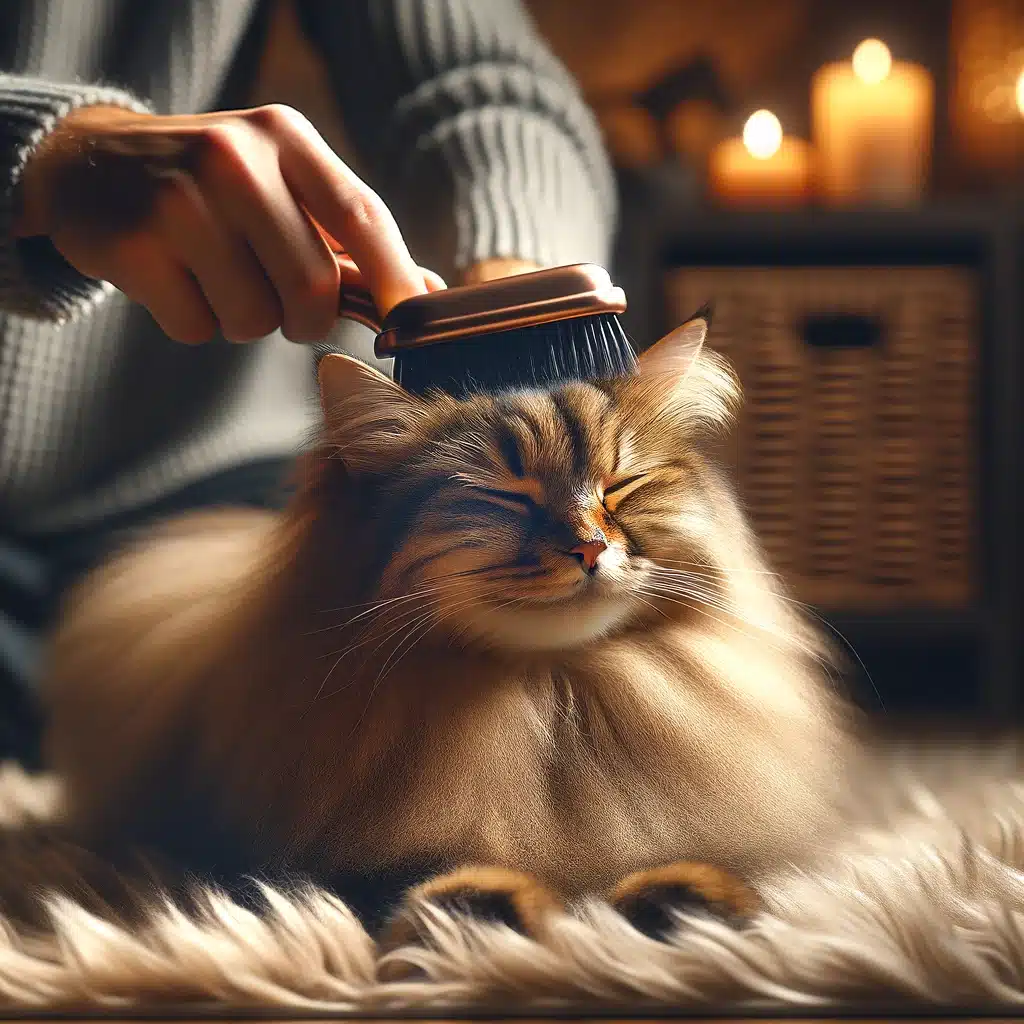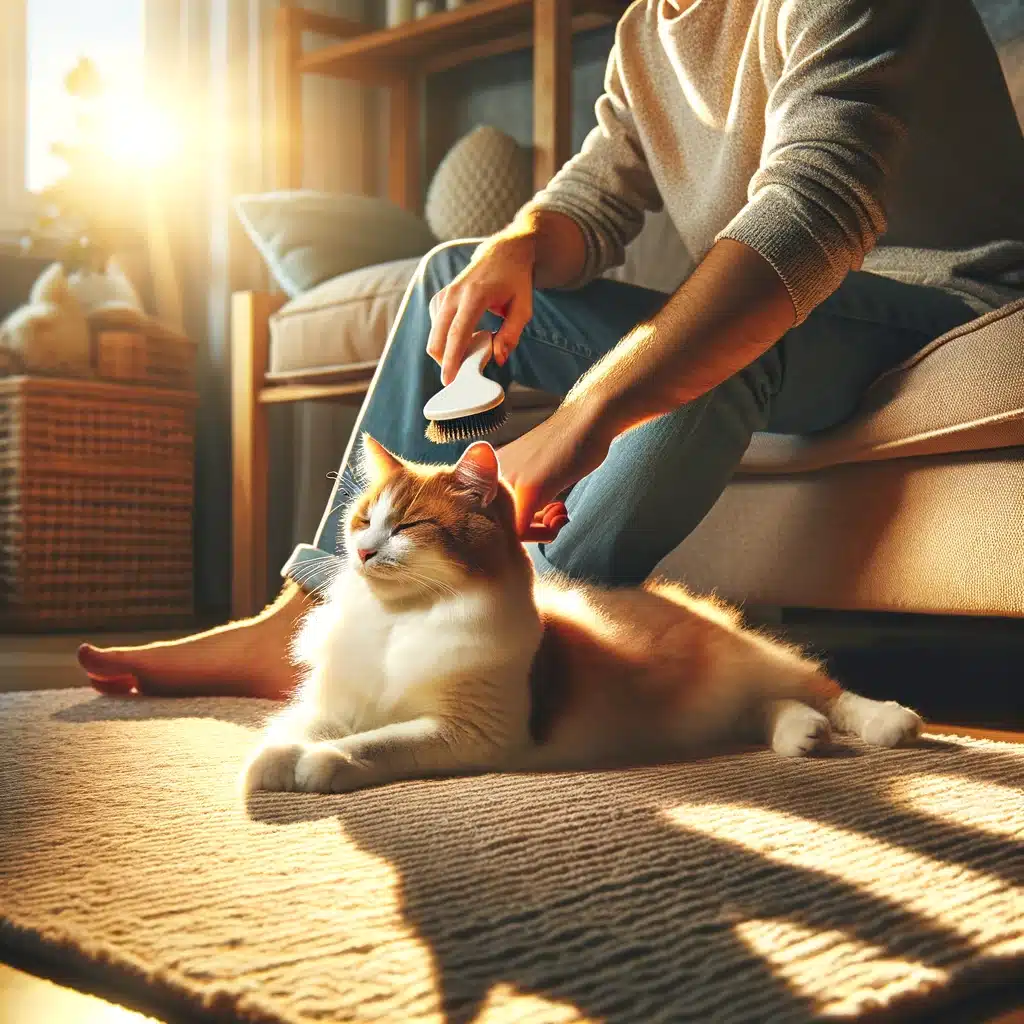
Cats are renowned for their self-cleaning habits, but even the most diligent feline can benefit from a little human intervention. Grooming your cat is not just about keeping their coat shiny and smooth; it’s an act of care that strengthens your bond and ensures their well-being. From preventing hairballs to fostering social connections, discover the myriad benefits of regular cat grooming.
The Importance of Regular Grooming
Preventing Hairballs and Loose Hair
One of the primary reasons to maintain a grooming routine is to aid in removing loose hair. Cats ingest fur as they clean themselves, which can lead to the formation of hairballs. By brushing your cat regularly, you can significantly reduce the amount of hair they swallow, thus preventing hairballs and potential digestive issues.
Managing Thick Coats and Preventing Mats
Cats with longer or denser fur may struggle with mats and tangles that are not only unsightly but can also be uncomfortable or even harmful to their health. Managing thick coats through regular grooming helps prevent these issues before they start, keeping your cat comfortable and their skin healthy.
Promoting Skin Health and Circulation
Brushing doesn’t just remove loose fur; it also stimulates the skin, promoting better blood circulation and healthier skin and fur growth. This grooming activity can be especially beneficial for older cats who might not groom themselves as thoroughly as they once did.

Grooming for Social Bonding
Strengthening Your Bond with Your Cat
Grooming is a typical bonding activity between cats. When you take part in grooming your cat, you’re mimicking this social behavior, which can help strengthen your relationship. It’s an expression of affection that your cat is likely to appreciate and reciprocate.
Grooming as a Calming Activity
For many cats, grooming can be a soothing experience. Using gentle strokes and soothing words during grooming sessions can calm a nervous or anxious cat, providing them with reassurance and comfort.
Grooming Tips and Techniques
Choosing the Right Tools
Selecting the appropriate grooming tools is crucial for a positive grooming experience. Brushes, combs, and dematting tools designed for cats can make the process more efficient and comfortable for your pet.
Creating a Positive Grooming Routine
Establishing a regular grooming schedule can help your cat get used to the process. Start grooming your kitten early to acclimate them to the experience. For adult cats, introducing grooming gradually and pairing it with positive reinforcement like treats or play can make grooming sessions something both of you look forward to.
Advanced Grooming Techniques
Dealing with Difficult Mats
Sometimes, despite regular grooming, tough mats can form in hard-to-reach areas. In these cases, it might be necessary to seek professional help to safely remove the mats without causing discomfort or injury to your cat.
Oral Hygiene and Nail Care
While not often associated with grooming, maintaining your cat’s oral hygiene and nail care are essential for their overall health. Regularly checking and cleaning your cat’s teeth, along with clipping their nails, can prevent numerous health issues and contribute to their well-being.
Bathing Your Cat
Most cats do not require frequent baths, but in some circumstances, a bath might be necessary. When bathing your cat, use a shampoo formulated specifically for cats and ensure the water is a comfortable temperature. Bathing can help in removing excess dirt and loose fur, contributing to a healthier coat.
Frequently Asked Questions
Q: How often should I groom my cat?
A: The frequency depends on your cat’s coat type. Short-haired cats may only need weekly brushing, while long-haired cats benefit from daily grooming to prevent mats and tangles.
Q: Can grooming help with my cat’s shedding?
A: Yes, regular brushing can significantly reduce shedding by removing loose fur before it ends up on your furniture and clothing.
Q: What should I do if my cat dislikes being groomed?
A: Start slowly, with short sessions, and gradually increase the duration. Use treats and soothing words to create a positive association. If your cat remains resistant, consult a professional groomer or veterinarian for advice.
In conclusion, cat grooming is an essential aspect of pet care that goes beyond mere aesthetics. It’s about health, happiness, and the bond you share with your feline friend. By incorporating regular grooming into your routine, you’re not just caring for your cat’s physical well-being but also nurturing your relationship with them.





